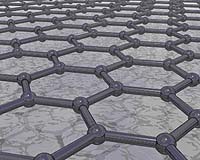 |
Montreal, Canada (SPX) Apr 14, 2010 Thanks to two technologies developed by Professor Beno�t Marsan and his team at the Universite du Quebec � Montreal (UQAM) Chemistry Department, the scientific and commercial future of solar cells could be totally transformed. Professor Marsan has come up with solutions for two problems that, for the last twenty years, have been hampering the development of efficient and affordable solar cells. His findings have been published in two prestigious scientific journals, the Journal of the American Chemical Society (JACS) and Nature Chemistry.
The untapped potential of solar energy The electricity produced by conventional solar cells, composed of semiconductor materials like silicon, is 5 or 6 times more expensive than from traditional energy sources, such as fossil fuels or hydropower. Over the years, numerous research teams have attempted to develop a solar cell that would be both efficient in terms of energy and inexpensive to produce.
Dye-sensitized solar cells Based on the principle of photosynthesis-the biochemical process by which plants convert light energy into carbohydrate (sugar, their food)-the Graetzel solar cell is composed of a porous layer of nanoparticles of a white pigment, titanium dioxide, covered with a molecular dye that absorbs sunlight, like the chlorophyll in green leaves. The pigment-coated titanium dioxide is immersed in an electrolyte solution, and a platinum-based catalyst completes the package. As in a conventional electrochemical cell (such as an alkaline battery), two electrodes (the titanium dioxide anode and the platinum cathode in the Graetzel cell) are placed on either side of a liquid conductor (the electrolyte). Sunlight passes through the cathode and the electrolyte, and then withdraws electrons from the titanium dioxide anode, a semiconductor at the bottom of the cell. These electrons travel through a wire from the anode to the cathode, creating an electrical current. In this way, energy from the sun is converted into electricity. Most of the materials used to make this cell are low-cost, easy to manufacture and flexible, allowing them to be integrated into a wide variety of objects and materials. In theory, the Graetzel solar cell has tremendous possibilities. Unfortunately, despite the excellence of the concept, this type of cell has two major problems that have prevented its large-scale commercialisation: + The electrolyte is: a) extremely corrosive, resulting in a lack of durability; b) densely coloured, preventing the efficient passage of light; and c) limits the device photovoltage to 0.7 volts. + The cathode is covered with platinum, a material that is expensive, non-transparent and rare. Despite numerous attempts, until Professor + Marsan's recent contribution, no one had been able to find a satisfactory solution to these problems.
Professor Marsan's solutions For the electrolyte, entirely new molecules have been created in the laboratory whose concentration has been increased through the contribution of Professor Livain Breau, also of the Chemistry Department. The resulting liquid or gel is transparent and non-corrosive and can increase the photovoltage, thus improving the cell's output and stability. For the cathode, the platinum can be replaced by cobalt sulphide, which is far less expensive. It is also more efficient, more stable and easier to produce in the laboratory. Immediately following their publication in JACS and Nature Chemistry, Professor Marsan's proposals were received enthusiastically by the scientific community. Many view his contribution as a major research breakthrough on the production of low-cost and efficient solar cells.
Share This Article With Planet Earth
Related Links Universite du Quebec � Montreal (UQAM) All About Solar Energy at SolarDaily.com
 Closing In On A Carbon-Based Solar Cell
Closing In On A Carbon-Based Solar CellBloomington IN (SPX) Apr 13, 2010 To make large sheets of carbon available for light collection, Indiana University Bloomington chemists have devised an unusual solution - attach what amounts to a 3-D bramble patch to each side of the carbon sheet. Using that method, the scientists say they were able to dissolve sheets containing as many as 168 carbon atoms, a first. The scientists' report will appear in a future issue of ... read more |
|
| The content herein, unless otherwise known to be public domain, are Copyright 1995-2010 - SpaceDaily. AFP and UPI Wire Stories are copyright Agence France-Presse and United Press International. ESA Portal Reports are copyright European Space Agency. All NASA sourced material is public domain. Additional copyrights may apply in whole or part to other bona fide parties. Advertising does not imply endorsement,agreement or approval of any opinions, statements or information provided by SpaceDaily on any Web page published or hosted by SpaceDaily. Privacy Statement |